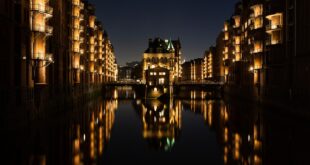The Fascinating History of These 15 Famous Landmarks
Introduction
From the iconic Eiffel Tower in Paris to the ancient Mayan pyramid of Chichen Itza, landmarks have become symbols of some of the world’s most treasured sites. With their fascinating history and intriguing stories, many of these landmarks have attracted millions of visitors each year, eager to learn more about their rich cultural and historical background.
1. The Parthenon in Greece
The Parthenon, dedicated to the goddess Athena, was built in Athens in the 5th century BCE. Regarded as one of the world’s finest examples of classical Greek architecture, the Parthenon has stood the test of time and remains a popular tourist destination today.
2. The Great Wall of China
The Great Wall of China, a series of fortifications built along the northern borders of China, stretches over 13,000 miles. Built to defend against invasions from the north, the Great Wall is a testament to the strength and ingenuity of ancient Chinese civilization.
3. The Colosseum in Rome
The Colosseum, a massive amphitheatre built in the first century CE, has been a symbol of the strength and power of the Roman Empire for thousands of years. The largest amphitheatre ever built, the Colosseum could hold up to 80,000 spectators.
4. The Taj Mahal in India
The Taj Mahal, built by the Mughal emperor Shah Jahan in the 17th century, is one of India’s most popular landmarks. Built as a tribute to his late wife, the Taj Mahal is considered one of the world’s most beautiful structures.
5. The Great Sphinx in Egypt
The Great Sphinx, located on the west bank of the Nile River in Giza, Egypt, is one of the world’s most famous landmarks. Estimated to have been built over 4,500 years ago, the Great Sphinx is a testament to the ingenuity and technology of ancient Egyptian civilization.
6. The Eiffel Tower in Paris
The Eiffel Tower, originally built as the centerpiece for the 1889 Paris Exposition, has become an iconic symbol of the French capital. Nearly seven million visitors climb to the top of the tower each year.
7. The Great Pyramids of Giza in Egypt
The Great Pyramids of Giza, located on the outskirts of modern-day Cairo, are the last surviving testimony to one of the world’s most ancient civilizations. Built more than 4,500 years ago, these massive stone structures have weathered centuries of erosion and still stand today as one of the world’s most impressive landmarks.
8. Machu Picchu in Peru
Machu Picchu, located in the Andes Mountains of Peru, is a well-preserved, ancient Incan city. Built in the 15th century and abandoned during the Spanish Conquest, Machu Picchu has been hailed as one of the world’s greatest architectural marvels and is a doorway into one of South America’s most fascinating cultures.
9. The Christ the Redeemer Statue in Brazil
The Christ the Redeemer statue, built on the Corcovado Mountain in Rio de Janeiro, Brazil, stands at 125 feet and is the largest art deco statue in the world. Modeled on the ideals of Christianity, the statue is dedicated to promoting love, unity, and peace among mankind.
10. The Petra archaeological site in Jordan
The Petra archaeological site in Jordan is an ancient, sandstone city that lies at the foot of the Jordan Valley. Built by the Nabataean culture around 312 BCE, Petra is known for its intricate water management systems and its impressive monuments carved into the rocky terrain.
11. Stonehenge in England
Stonehenge, the prehistoric monument located in Wiltshire, England, remains a popular draw to this day. Believed to have been constructed over 4,500 years ago, the inner circle of stones remains one of the world’s unsolved mysteries, with scientists still speculating on the purpose of the massive structure.
12. The Sydney Opera House in Australia
The Sydney Opera House, built in 1973, has become a symbol of Australia’s culture and identity. Designed by the Danish architect Jorn Utzon, the unique, sail-shaped roof structure remains one of the world’s most impressive architectural works.
13. The Tower Bridge in London
The Tower Bridge, constructed in 1894, is an iconic landmark that spans the Thames River in London. This bridge, with its distinctive twin towers, has become a symbol of London life, drawing in millions of visitors each year eager to snap that perfect bridge selfie.
14. The Angkor Wat Temple complex in Cambodia
The Angkor Wat Temple complex in Cambodia is one of the world’s largest religious monuments. Built around 800 CE, the intricate designs of the temple and surrounding palace complexes remains a testimony to the grandeur achieved by the Khmer empire thousands of years ago.
15. The Chichen Itza in Mexico
The Chichen Itza kingdom located in Mexico is an ancient Mayan city that lies beneath dense jungle foliage. Built around 900 CE and later re-inhabited after the collapse of the Mayan people, the intricate gameplay hoops and delicately carved monuments of Chichen Itza have gone on to fascinate generations of modern explorers.
 Mind Uncharted Explore. Discover. Learn.
Mind Uncharted Explore. Discover. Learn.




